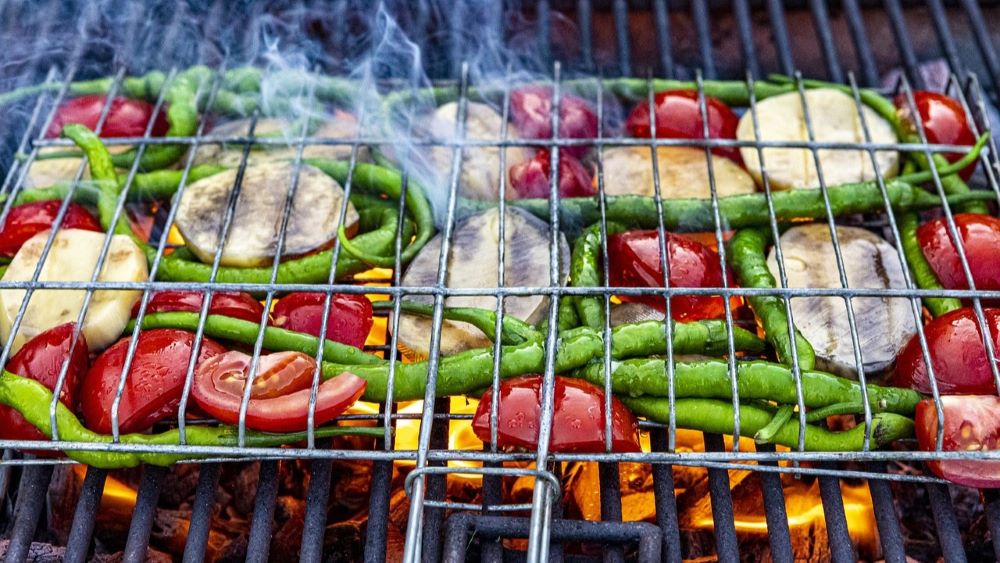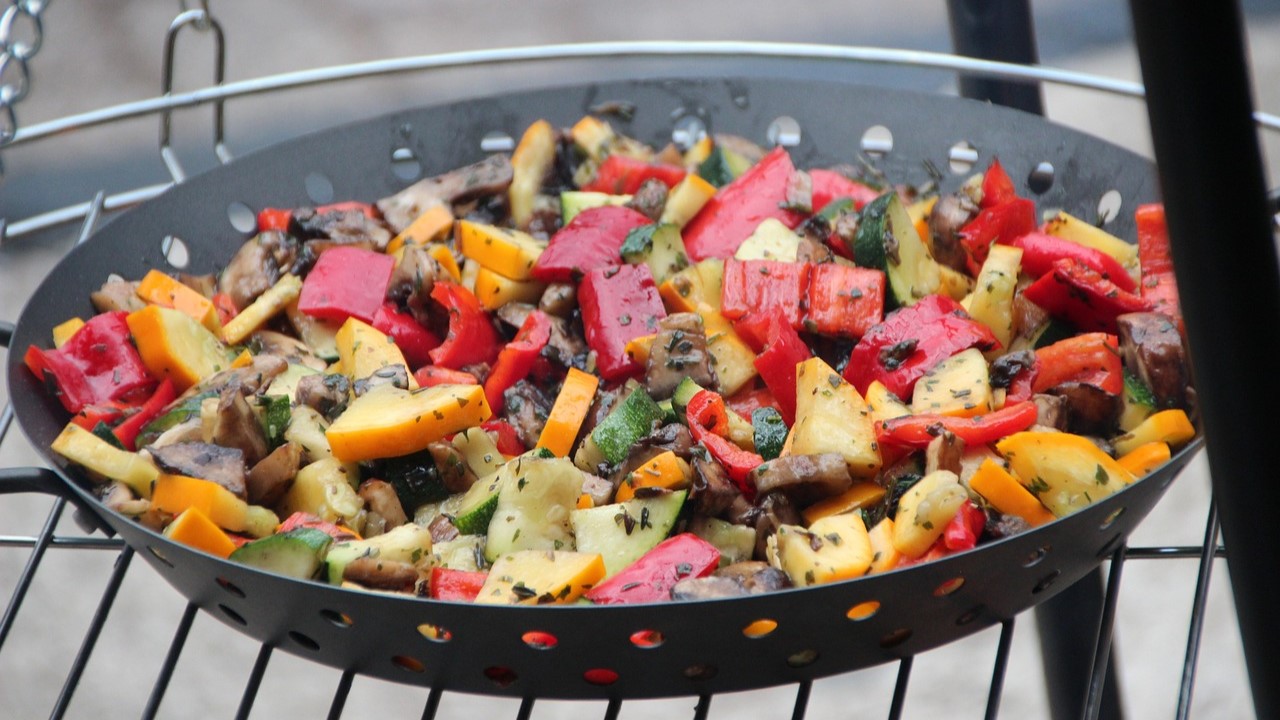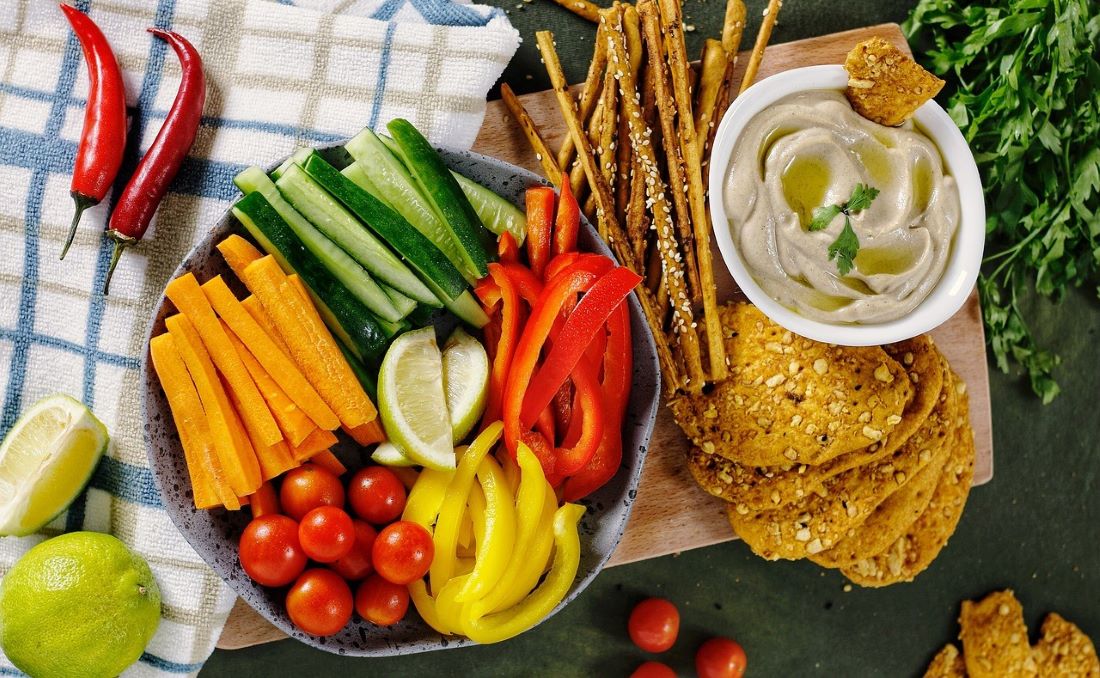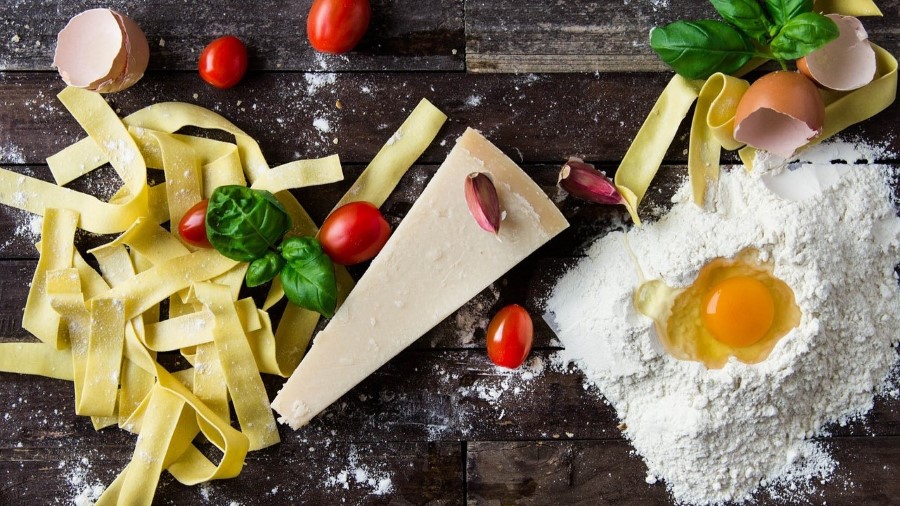As professionals encouraging people to enjoy more fruits and vegetables, we all know vegetables can be a bit more of a challenge than fruit. Here are some of my best tips for helping people make vegetables taste so good that they’ll actually want to eat them!
How To Cook Vegetables For Better Flavor
Here are some cooking methods to help tone down the bitterness and make veggies taste better. What do they have in common? High temperatures! When you cook vegetables over high heat, you can get a slight caramelization effect. The result is browning around the edges. Some of the molecules in the veggies are converted to simple sugars, helping them taste less bitter or slightly sweeter.
Tip: This caramelization effect is different than the very specific Maillard reaction, although it’s sometimes used interchangeably to describe the flavors that results from cooking over high heat. The Maillard reaction, such as the browning on baked bread or the searing on steaks, occurs between amino acids (proteins) and reducing sugars (carbohydrates). Caramelization can refer to a variety of different chemical reactions that create sweet, nutty flavor profiles in foods.
Try These Cooking Techniques

Grilling or Smoking: This works particularly well during warmer months. If you’re firing up the grill or smoker for other recipes, throw some vegetables into the mix! The high heat and smoky flavors can add a distinct charred flavor that you might enjoy.
Roasting: Use a sheet pan and spread cubed or chopped veggies in a single layer. Don’t overcrowd your pan, as moisture will release during cooking and they will wind up mushy or soggy. Leave enough space for air to circulate in between and you’ll see the browning effect you’re looking for!
Sauteing: This stovetop cooking method often uses oil to help prevent sticking. My top choice? Butter. As it cooks, it goes through a browning reaction of its own. It’s a very simple way to make vegetables taste better.
Air Frying: If you have one, put it to good use! Like roasting, the air that circulates around vegetables as they cook can improve the texture and overall flavor.
How To Season Vegetables For Better Flavor

Seasonings are one of my favorite things to play around with in the kitchen. Using fresh or dried herbs, spices, oils, vinegar, cheese, and other ingredients can totally change the way a recipe turns out. Get creative with some of these suggestions!
Leafy greens: chili sauce or chili oil, infused vinegars, horseradish, green onions, red pepper flakes, sesame seeds.
Carrots, sweet potatoes, or butternut squash: allspice, anise, browned butter, cumin, honey, mint, orange (juice or zest), tarragon, thyme.
Mushrooms: capers, cilantro and coriander, fennel, lemon (juice or zest), rosemary, tarragon.
Broccoli, cauliflower, or other cruciferous vegetables: curry powder or garam masala, hollandaise sauce, mint, white pepper, pine nuts, mustard and mustard seeds.
Potatoes: basil, cilantro, dill, garam masala, marjoram, paprika, sage, vinegar, yogurt or sour cream.
And now I’ll let you in on my #1 seasoning hack for making vegetables taste better: MSG.
Yes, MSG or monosodium glutamate. It adds so much delicious umami (savory) flavor that I rarely cook vegetables without it.
It’s unfortunate that MSG has been cast as a “bad” thing for foods. I see far too many “made without MSG” labels on food packages and in restaurants, which is disappointing. I think of all the flavor they’re missing out on! MSG is safe to consume (we have the science to prove it). And since it can reduce added salt in recipes by 30 to 60%, it seems like an obvious choice. Flavor plus better nutrition? That’s a win-win for me!
Another unique ingredient I love: liquid smoke. A little bit goes a long way, so a small bottle can last quite a while. It adds a savory, smoky flavor that will make your vegetables feel like you just pulled them out of the smoker.
How To Serve Vegetables For Better Flavor

With a dipping sauce: Think beyond the classic veggies + ranch… I mean, ranch does make veggies taste better, but dipping sauces can span the entire flavor spectrum too and balance the tastes and textures in very complementary ways.
With a dressing: Vegetables don’t have to be in a salad to get topped with dressing. I rely on the Honey Mustard Vinaigrette for so many things! Try mixing your own DIY dressings at home with unique oils and vinegars or turn to your favorite store-bought versions for convenience.
With a pickled element: Pickle brining liquids range from super salty or sour to mildly sweet and tangy. Depending on the type of vinegar, herbs, and spices used, it can add a whole new layer of flavor. And don’t limit yourself to traditional dill pickle flavors.
Whether you have a picky eater on your hands, want to expand your taste horizons, or simply want to get out of a flavor rut, I hope you’ll try some of these tips!
The post How To Make Vegetables Taste Good: Flavor Pairings & Cooking Strategies first appeared in The Foundation for Fresh Produce’s Have a Plant® movement blog.
Written by: Cara Harbstreet, Registered Dietitian, Street Smart Nutrition
Cara is a non-diet registered dietitian and nationally recognized food and nutrition expert. She specializes in intuitive eating and supporting clients in fearlessly creating nourishing meals. Cara appears in local and regional broadcast media and contributes her nutrition expertise in the digital and blogging space. She also makes regular podcast appearances to promote the benefits of a flexible, intuitive eating pattern.
About The Foundation For Fresh Produce And Have A Plant® Movement

The Foundation for Fresh Produce’s vision is to grow a healthier world by changing the trajectory of human health. The produce industry has the potential to provide solutions for many of the world’s greatest health and economic challenges – especially those surrounding nutrition and hunger.
The Foundation focuses on improving the appeal of fruit and vegetables as an integral part of people’s diets, supporting the development of infrastructure and supply chain solutions that provide easier access, and establishing strategic alliances that enable children and families to form healthier eating habits.
The transformative Have A Plant® Movement inspires consumers with compelling reasons to believe in the powerful role fruits and vegetables can play to fuel happy, healthy and active lifestyles.
About International Fresh Produce Association (IFPA)

The International Fresh Produce Association (IFPA) is the largest and most diverse international association serving the entire fresh produce and floral supply chain and the only to seamlessly integrate world-facing advocacy and industry-facing support. We exist to bring the industry together to create a vibrant future for all. We grow our member’s prosperity by conducting advocacy; connecting people and ideas; and offering guidance that allows us all to take action with purpose and confidence


